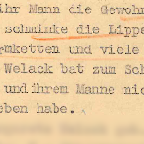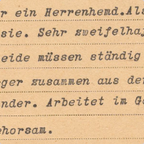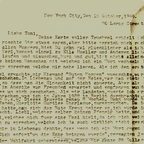Forcefully Re-Dressed

© Archive branch of the LWV archive at the Hadamar memorial.
Daily Reports on _Kohlmann from the Psychiatry

© Archive branch of the LWV archive at the Hadamar memorial.
This daily report in _Kohlmann's medical files from the psychiatric hospital in Hadamar shows, that _Kohlmann's preferred male connoted clothing was taken away from them. The fact that _Kohlmann and another person later stole razors and bow ties from the psychiatries men's wardrobe can be read as an act of queer resistance in an environment that sought to destroy any gender nonconformity. Still a minor and coming from a working-class household, sexual dissoluteness and a lack of intelligence had been attributed to _Kohlmann. As a result, they were later forcibly sterilized.
Through police and court regulations, gender nonconforming people could be prohibited from living in their preferred gender presentation. In detention situations, such as in concentration camps or in medical facilities such as psychiatric hospitals, they were also forced to clarify the gender assigned to them at birth. For example, their preferred clothing was taken away. Some transfeminine people, like Käte Rogalli, had their hair cut against their will.






























